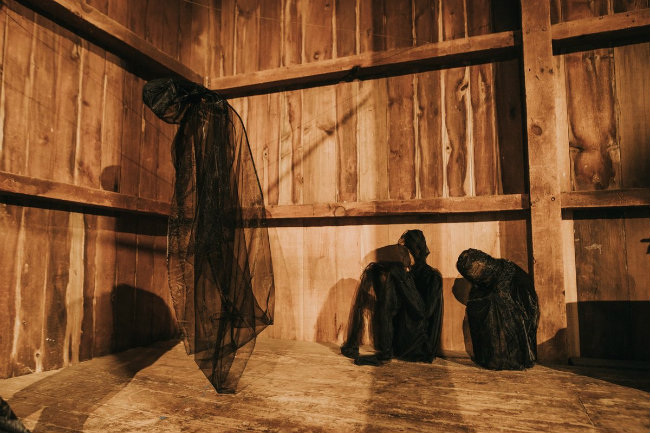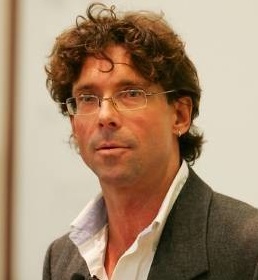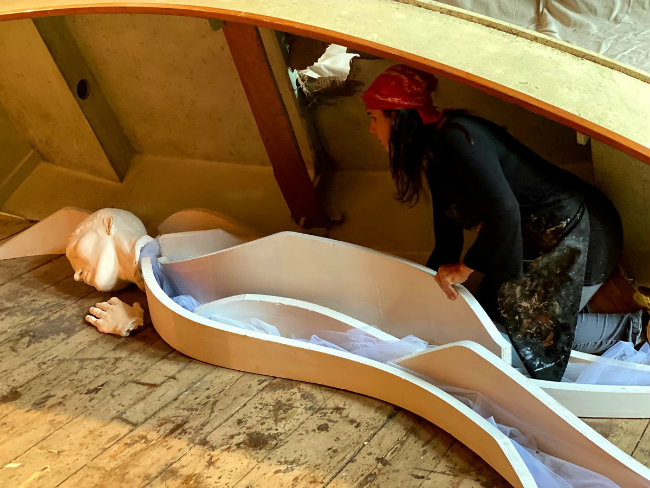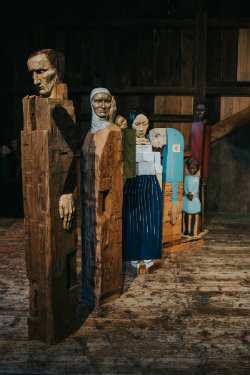
Multidisciplinary researcher Robert Barsky has added a new approach to his studies on migration with the fall 2020 launch of Contours Collaborations: Border Crossings in Art and Humanities, a digital journal for telling stories through the lens of art.
"I have always loved art and have become convinced of its fundamental power to shift deeply held attitudes by creating empathy and a sense of shared experiences," said Barsky, a professor of French and comparative literature who has additional appointments in law, European studies and Jewish studies.
In 2003, Barsky's longtime interest in migration and borders led to his founding of Ameriquests, an academic journal that brings together policy, law and humanistic approaches to border crossings.

"After nearly two decades of working on Ameriquests, I came to the realization that policy and law, with regards to border crossings, have been relatively unsuccessful in fighting U.S. populism and European Union initiatives that fly in the face of advocacy for migrants seeking a better life," he said. "So I wanted to add art to my work."
He developed a partnership with Knowledge Futures Group, a joint initiative of MIT Press and MIT Media Lab, to create an online journal that is building new digital platforms to represent artists' work in highly innovative dimensions and realms. MIT Media developed the website.
Barsky reached out to New Haven-based sculptor Susan Clinard, whose work has a strong focus on border crossings and shared humanity, for the journal's first collaboration. "Susan's work is emotionally packed and gorgeous," Barsky said. "And she was intrigued with our goal of seeking new and creative ways to create empathy for a subject that is deeply complex."
For the journal's photographs, Clinard placed her artwork in the dark wooden interior of the Eli Whitney Barn, which is near her studio.

"Working on this collaboration was a deeply powerful experience," Clinard said. "It poetically emphasized the need to look at issues of border crossing in a refreshing and profoundly different way…a way that may speak louder than words or policies that get stored away and forgotten. When we allow ourselves to feel something, we inherently create empathy, and this speaks volumes for future understanding."

The virtual presentation of Clinard's works creates the three-dimensional effect of moving through various rooms, with fully embodied sculptures as well as "airy figures made out of fabric that convey the theme of migrants having to remain in the shadows," Barsky said. "Eventually we'll have adjacent rooms on the digital platform for videos as well as commentaries on the art or perhaps a related issue. Contours Collaborations will be highly interactive."
Another Contours Collaborations project is under discussion with Serge Alain Nitegeka, a Johannesburg artist who is unable to leave South Africa while his citizenship case is being resolved (in addition to COVID-19 restrictions). He was born in Rwanda. Nitegeka could not travel to New York City for the installation of his exhibition, Black Migrant, at the Marianne Boesky Gallery during spring 2020.
"I learned about his story from a New York Times profile and thought that this was exactly the kind of artist whom we would like to feature, one whose work is shaped by the tremendous hardship and challenges he endured while fleeing Rwandan genocide in the early 1990s," Barsky said.
Contours Collaborations is supported by Barsky's Canada Research Chair on Law, Narrative and Border Crossing.






